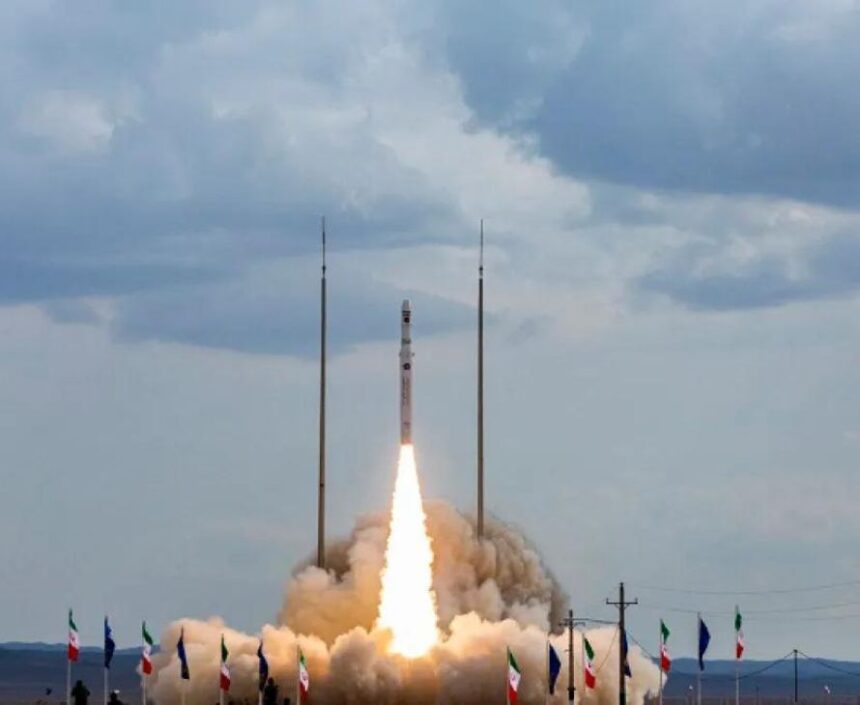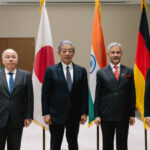Iran has marked a significant milestone with the successful launch of its “Chamran 1” research satellite. Weighing approximately 60 kilograms, the satellite was propelled into orbit using the Qaem-100 carrier. Upon reaching an altitude of 550 kilometers, just a few hours after launch, it transmitted its first signals back to earth confirming its successful deployment.
The launch demonstrated not only Iran’s advancing capabilities in space exploration but also its growing ambition to be seen as a significant contributor to space technology and research. Nasser Kanaani, the spokesperson for Iran’s Foreign Ministry, said the successful deployment was was a testament to the country’s role as a “rational, strong and constructive player on the global stage.”
According to experts, the “Chamran 1” stands out as the first Iranian-developed spacecraft with the capability to alter its orbit post-launch, a major technological advancement for Iran’s space program. The satellite’s primary mission is to test and validate both software and hardware designed for orbital manoeuvring. Essentially, “Chamran 1” is acting as a test bed for a series of technologies that are crucial for more advanced space missions in the future.
This is a huge step for Iran, as mastering orbital manoeuvres can pave the way for more sophisticated space operations, such as docking with other spacecraft or deploying multiple satellites from a single launch.
One of the satellite’s main objectives is to evaluate the effectiveness of cold gas propulsion subsystems in space. Cold gas propulsion is a relatively simple and efficient technology used for small movements or adjustments in space, making it ideal for satellites like “Chamran 1” that need to make precise, controlled manoeuvres.
By successfully testing this technology, Tehran is demonstrating its ability to manage advanced space propulsion systems, which is critical for ensuring that satellites can adjust their orbits or orientation as needed once they’re in space. In addition to propulsion testing, “Chamran 1” will be assessing its navigation and attitude control systems in a space environment. These systems are crucial for maintaining a satellite’s position and ensuring that its instruments are accurately pointed toward their targets, whether that be a specific area on earth or a distant celestial body.
Mastery of these systems is essential for any country aiming to conduct more advanced space missions, including earth observation, scientific research or even interplanetary exploration. The successful deployment demonstrates that Iran has made significant progress in its ability to build, launch, and manage complex space systems. Such progress is noteworthy because it indicates that the country is moving towards more autonomous and independent space operations, reducing its reliance on foreign technology and expertise.
As more countries strive to reach new heights in space exploration, the ability to manoeuvre and control satellites effectively is becoming increasingly important, especially for tasks such as earth observation, climate monitoring, disaster management, and even national security. Moreover, this achievement could encourage collaborations with other countries interested in space exploration, particularly those within the BRICS +community or nations looking for more affordable satellite technology solutions.
Iran’s willingness to share knowledge and expertise could make it an attractive partner for countries aiming to develop their own space programs but lacking the resources to do so independently. As “Chamran 1” continues to operate in space, it will undoubtedly provide valuable data and insights that will inform Iran’s future space missions. The lessons learned from this satellite’s journey will likely contribute to the design and development of more advanced satellites in the coming years.
If successful, these future missions could involve more complex tasks, such as launching larger satellites with more sophisticated payloads, conducting scientific experiments in orbit, or even exploring interplanetary missions. Iran’s long-term vision for its space program involves not just deploying research satellites but eventually establishing a sustainable presence in space. The ability to alter satellite orbits, manage propulsion systems, and effectively control navigation and attitude in space are all critical skills that will support Tehran’s aspirations in this domain.
In recent years, the country made several attempts to launch satellites, some of which were unsuccessful. This achievement not only boosts the country’s credibility in the global space community but also sends a message that Iran is determined to expand its capabilities despite facing numerous challenges and international sanctions.














I don’t think the title of your article matches the content lol. Just kidding, mainly because I had some doubts after reading the article.
Can you be more specific about the content of your article? After reading it, I still have some doubts. Hope you can help me.
Thanks for sharing. I read many of your blog posts, cool, your blog is very good.